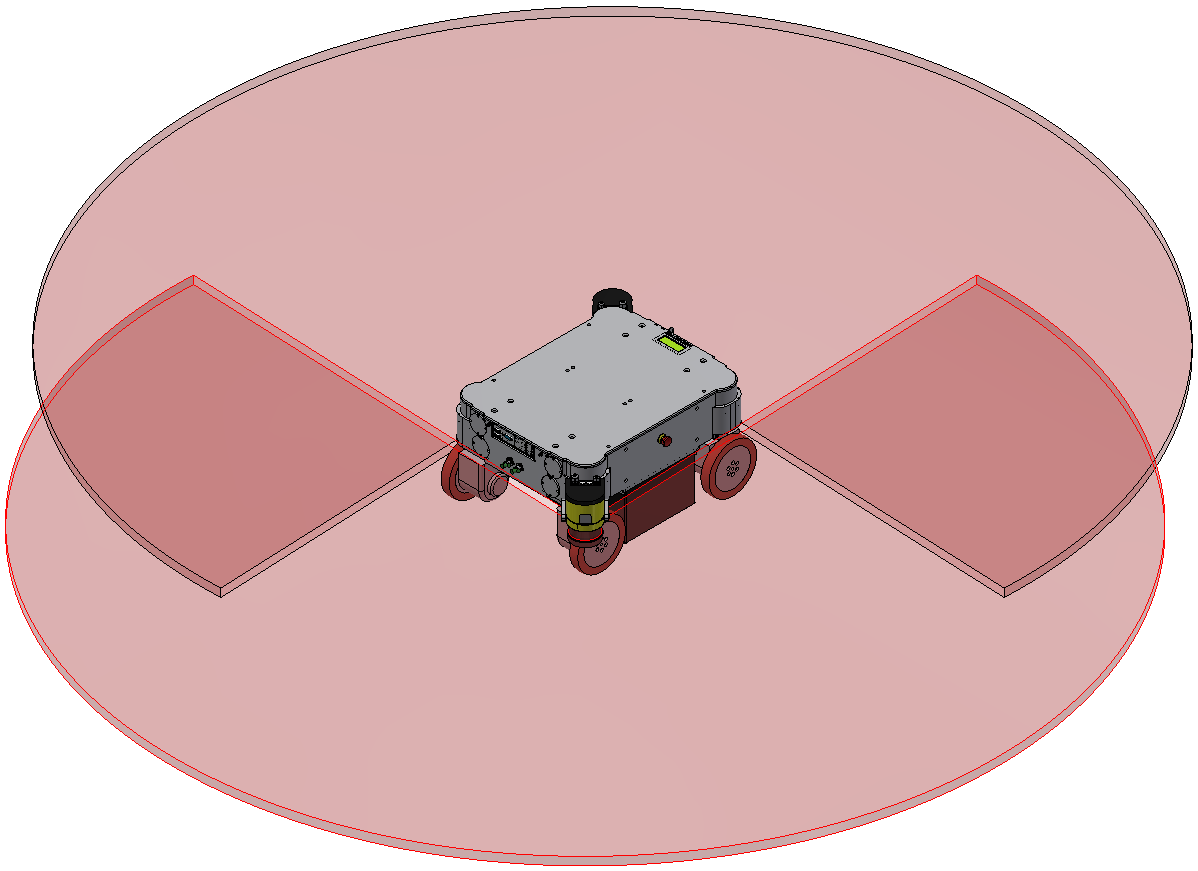Laser Scanners¶
Mode of Operation¶
The safety laser scanners installed in mobile robots emit an invisible infrared laser beam that is reflected by obstacles and detected by the sensor head. The distance between the sensor and the obstacle can be precisely determined from the travel time of the beam. The sensor head rotates so that the beam effectively scans a plane perpendicular to the axis of rotation.
If the scanner is used in a mobile robot for localisation and collision avoidance, it is usually mounted upright so that the scanning plane is parallel to the floor. According to common AMR standard (DIN EN ISO 3691-4), the scanner should be mounted at a maximum height that allows objects 200 mm high to be reliably detected. This ensures that people lying on the floor are also detected and protected. Modern safety laser scanners have a field of view of over 270° and, when mounted on opposite corners of the robot platform, enable seamless monitoring of the area around the robot.

The safety laser scanners not only provide measurement data of the working environment, which is used for localisation and path planning, but also monitor the robot’s surroundings for obstacles and possible collisions. For this purpose, areas around the robot can be defined in which detected objects automatically trigger various reactions.
This function is a fundamental part of the safety concept of the mobile robots. You can find more information at Safety Instructions and specifically at Safety Fields as well as in the safety instructions that you receive on delivery.
Safety Instructions¶
The laser scanners are devices of laser class 1 or 1M and completely harmless during normal use.
Danger
Laser scanners that are laser class 1M devices might be used for special projects and requirements. These are only eye-safe as long as no optical instruments such as magnifying glasses or binoculars are used.
As it is usually not immediately recognisable from the outside which type of laser scanner has been installed, optical instruments should generally not be used to look into the laser beam.